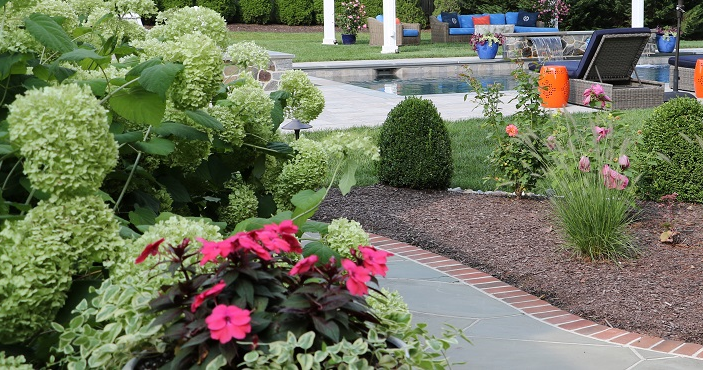Importance of Proper Watering
Everyone knows that watering is vital for healthy plants and trees, but some may be unaware of the right amount needed. Some homeowners can easily fall into overwatering or underwatering their plants, which causes plant health care issues. Understanding the importance of proper watering is crucial to keeping plants healthy and looking great. Below we discuss why proper watering is essential, common plant problems from over and underwatering, and what you can do to ensure proper watering.
What Is The Importance of Proper Watering?
Water is essential for transporting the nutrients plants pull from the soil throughout the rest of the plant (to the leaves, petals, and branches,). Plants also need water for two other critical processes: photosynthesis and transpiration. During photosynthesis, water creates carbohydrates and supplies energy to the plant, while in transpiration, water cools and maintains the plant’s temperature.
Common Plant Problems Due to Improper Watering
So now that you understand how and why water is vital to plants, you may be wondering about the right amount of water to give your plants. Determining how much water your plants need can be tricky because that depends on where you live, the weather, and the plant species in your landscape. One way you can determine how much water your plants need is by examining their appearance. Below are signs that indicate your plants have too much water or need more.

Signs of Overwatering
Plants that grow in soil that is too wet (overwatered) can suffer from a lack of oxygen or be prone to rot and diseases. Some signs to look out for that may indicate your plants are overwatered include the following:
- Foul odor from the soil
- Mildew, mold, or fungal growth on the plant or soil
- Soft, mushy stem, and roots that are mushy, slimy, or black/brown/grey instead of white
- Blisters on the undersides of leaves
Overwatering can be a common issue for homeowners as some may water their plants even after rainfall, or lack proper drainage.

Signs of Underwatering
Underwatering is the opposite problem, and too little water can hinder growth and make plants more susceptible to pests or diseases. Here are some of the common symptoms of an underwatered plant:
- Slow, stunted plant growth or a failure to flower
- Brittle, crisp stem
- Lower leaves yellowing and curling
An important note is that some plant problems can be a symptom of either overwatering or underwatering, depending on your plants’ other issues. Those symptoms include the following:
- Dropping leaves
- Wilting
- Browning edges (light, brittle leaves indicate underwatering, while soft, limp ones indicate overwatering)
- Pests
Many of these issues may require checking soil moisture or examining other areas of your landscape, so contact a landscape and irrigation professional to figure out whether your plants are over or underwatered.
How to Avoid Over & Underwatering
Over and underwatering plants is a common issue homeowners deal with, but the importance of proper watering is keeping landscapes vibrant, lush, and healthy. To avoid problems that over and underwatering can cause, get a smart irrigation system for your home. An irrigation system can be fitted with different technologies, such as rain sensors and drip irrigation, to give all of your plants the necessary water for optimal growth. Irrigation systems also save you time and water, especially if you have a large yard and many plants.
Contact Burkholder for Irrigation & Sprinkler Systems
If you want to keep your plants healthy through an irrigation system, contact Burkholder Brothers. We have years of experience designing, installing, and maintaining Sir Sprinkler irrigation systems for Main Line residents. Our sprinkler and irrigation company can consult with you to design an irrigation system that meets all of your plants’ needs. For more information on the importance of proper watering or our services, contact us today.

